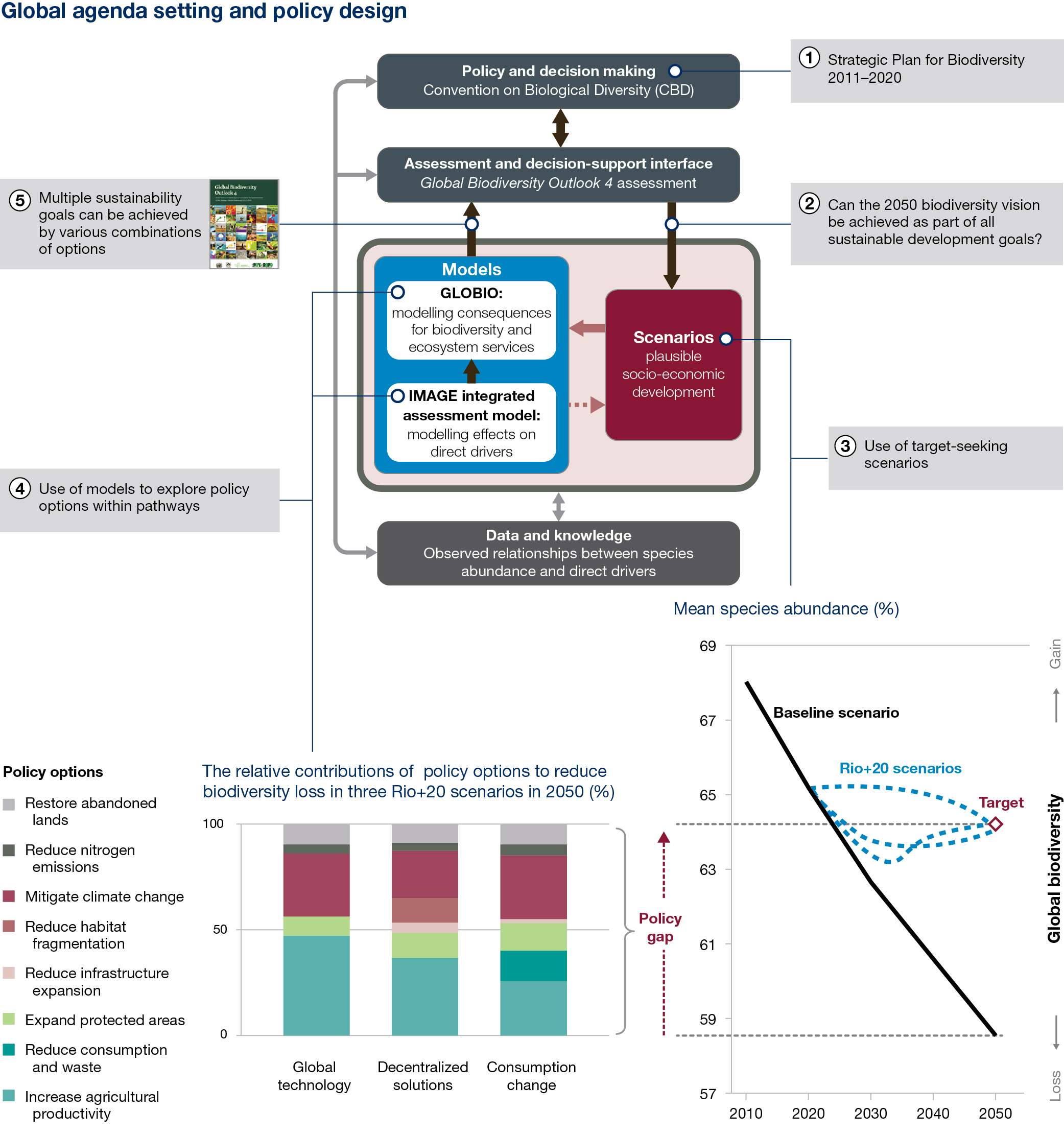Policy agenda-setting
Scenarios and models can help agenda setting processes. Below is an example of the use of scenarios and models for agenda setting and policy design in the Global Biodiversity Outlook 4.

Figure 1: This figure shows an example of the use of scenarios and models for agenda setting and policy design in the Global Biodiversity Outlook 4 assessment of the Convention on Biological Diversity to evaluate the Strategic Plan for Biodiversity 2011-2020 (step 1). The Global Biodiversity Outlook 4 used many types of scenarios and models and relied heavily on target-seeking scenarios to explore scenarios for attaining multiple international sustainability objectives by 2050. The targets in those scenarios included keeping global warming to below 2°C (United Nations Framework Convention on Climate Change), halting the loss of biodiversity by 2050 (Strategic Plan for Biodiversity 2011-2020) see bottom left-hand graph) and eradicating hunger (Millennium Development Goals) (step 2). Three plausible scenarios for achieving these multiple sustainability objectives were explored. The bottom right-hand graph illustrates how these scenarios differ from a business-as-usual scenario in terms of impacts on global biodiversity (step 3). The IMAGE Integrated Assessment Model was used to evaluate scenarios of indirect drivers and to model the relationships between indirect and direct drivers. Impacts on terrestrial biodiversity were modeled using the GLOBIO3 biodiversity model. The bottom left-hand graph shows the relative contributions of indirect drivers to halting biodiversity loss by 2050 compared to the business-as-usual scenario (step 4). The Global Biodiversity Outlook 4 report indicates that multiple targets can be achieved and was an important factor in discussions at the twelfth meeting of the Conference of the Parties to the Convention on Biological Diversity, which ended with additional commitments for action and funding to achieve the Aichi Biodiversity Targets (step 5).
Example of assessments: